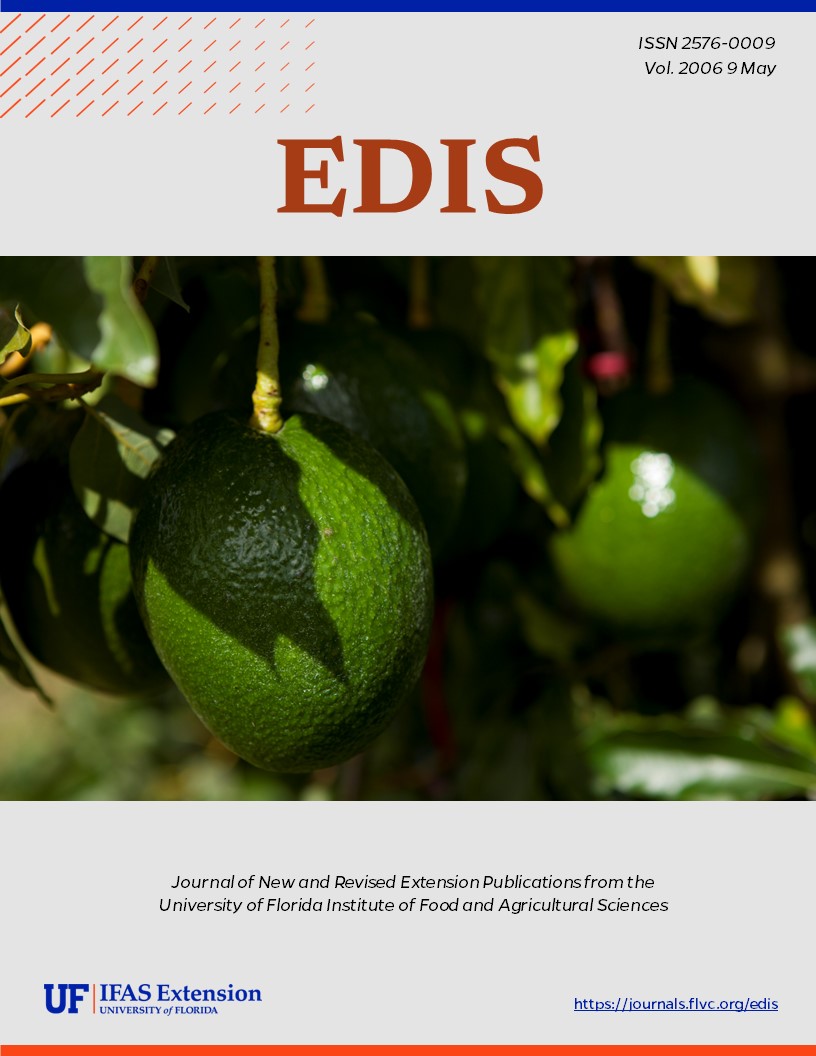Abstract
Arthropods are important pests of poultry in Florida, especially where proper management practices are not implemented. Lice and mites are the most common pests of poultry in Florida although the fowl tick and the sticktight flea may also cause serious problems. Though not a parasite of poultry, the house fly is a major concern to poultry producers, especially in caged-layer operations. This document is ENY-290 (IG140), one of a series of the Entomology and Nematology Department, UF/IFAS Extension. Original publication date July 1977. Revised March 2006.
References
Axtell, R. C. 1970. Integrated fly-control program for caged-poultry houses. J. Econ. Entomol. 63: 400-405. https://doi.org/10.1093/jee/63.2.400
Burg, J. G. and R. C. Axtell. 1984. Monitoring house fly, Musca domestica (Diptera: Muscidae) populations in caged-layer poultry houses using a baited jug-trap. Environ. Entomol. 13: 1083-1090. https://doi.org/10.1093/ee/13.4.1083
Calibeo-Hayes, D., S. S. Denning, S. M. Stringham, J. S. Guy, L. G. Smith, and D. W. Watson. 2003. Mechanical transmission of turkey coronavirus by domestic houseflies (Musca domestica Linnaeaus). Avian Dis. 47: 149-153. https://doi.org/10.1637/0005-2086(2003)047[0149:MTOTCB]2.0.CO;2
Durden, L. A. 2002. Lice (Phthiraptera), In: Medical and Veterinary Entomology, (G. R. Mullen and L. A. Durden, Eds.), pp.45-65. Elsevier Science, San Diego, CA. https://doi.org/10.1016/B978-012510451-7/50006-2
Durden, L. A. and R. Traub. 2002. Fleas (Siphonaptera), In: Medical and Veterinary Entomology, (G. R. Mullen and L. A. Durden, Eds.), pp. 103-128. Elsevier Science, San Diego, CA. https://doi.org/10.1016/B978-012510451-7/50009-8
Geden, C. J., R. E. Stinner, D. A. Kramer, and R. C. Axtell. 1990. MACMOD: A simulation model for Macrocheles muscaedomesticae (Acari: Macrochelidae) population dynamics and rates of predation on immature house flies (Diptera: Muscidae). Environ. Entomol. 19: 578-586. https://doi.org/10.1093/ee/19.3.578
Hogsette, J. A. 1996. Development of house flies (Diptera: Muscidae) in sand containing varying amounts of manure solids and moisture. J. Econ. Entomol. 89: 940-945. https://doi.org/10.1093/jee/89.4.940
Kaufman, P. E., and D. A. Rutz. 2002. Susceptibility of house flies (Diptera: Muscidae) exposed to commercial insecticides on painted and unpainted plywood panels. Pest Manag. Sci. 58: 174-178. https://doi.org/10.1002/ps.436
Kaufman, P. E., M. Burgess, and D. A. Rutz. 2002. Population dynamics of manure inhabiting arthropods under an integrated pest management (IPM) program in New York poultry facilities--3 case studies. J. Appl. Poultry Res. 11: 90-103. https://doi.org/10.1093/japr/11.1.90
Lysyk, T. J. and R. C. Axtell. 1986. Movement and distribution of house flies (Diptera: Muscidae) between habitats in two livestock farms. J. Econ. Entomol. 76: 993-998. https://doi.org/10.1093/jee/79.4.993
Moon, R. D., J. L. Hinton, D. O. O'Rourke and D. R. Schmidt. 2001. Nutritional value of fresh and composted poultry manure for house fly (Diptera: Muscidae) larvae. J. Econ. Entomol. 94: 1308-1317. https://doi.org/10.1603/0022-0493-94.5.1308
Mullen, G. R. and B. M. OConnor. 2002. Mites (Acari), In: Medical and Veterinary Entomology, (G. R. Mullen and L. A. Durden, Eds.), pp.449-517. Elsevier Science, San Diego, CA. https://doi.org/10.1016/B978-012510451-7/50025-6
Palmer, T. W., C. D. Steelman and E. E. Gbur. Seasonal abundance and sex ratio of the house fly, Musca domestica, and the black garbage fly, Hydrotaea aenescens, in turkey finishing houses in northwest Arkansas, Fayetteville, AR.
Pitts, C. W., P. C. Tobin, B. Weidenboerner, P. H. Patterson and E. S. Lorenz. 1998. In-house composting to reduce larval house fly, Musca domestica L., populations. J. Appl. Poultry Res. 7: 180-188. https://doi.org/10.1093/japr/7.2.180

